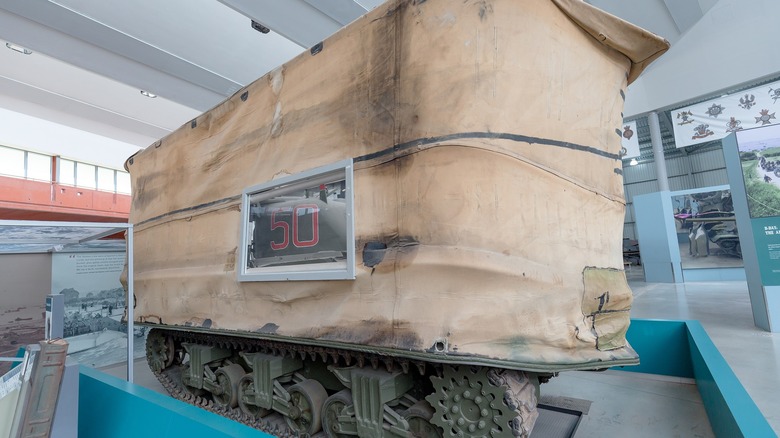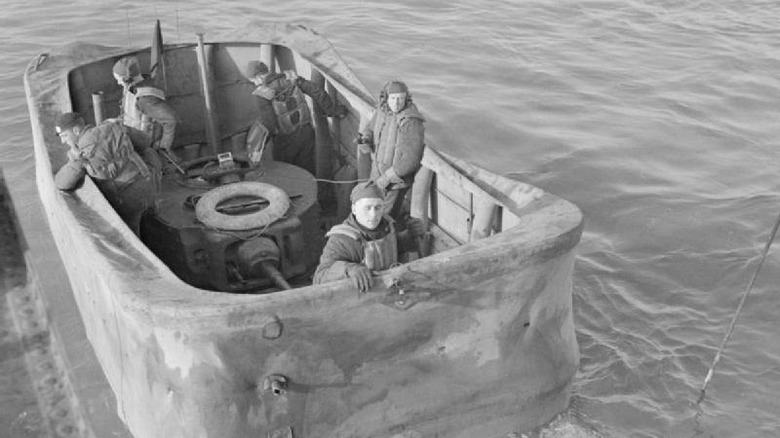The DD Tank: Britain's Strange Amphibious Swimming Tank
War may be the bane of humankind's existence, but it also drives scientific innovation and technological development that might not otherwise come to fruition. For instance, out of World War II came radar, electronic computers, and blood plasma transfusions. Additionally, the U.S. Army backed the development of the first flu vaccines given to military personnel in 1945 and then to civilians a year later.
It is a prime example showing that need is the driving force behind the actual creation of something instead of merely desire, which reaffirms the age-old proverb that necessity is the mother of invention. There were other zany contraptions that worked in a pinch for short-term projects but never really materialized into world-renowned breakthroughs.
One such creation is the British Duplex Drive (DD) amphibious tank (aka "The Donald Duck Tank" or the "The Swimming Sherman"), which had a considerable impact on the D-Day Invasion but afterward fell off the map into obscurity. Its development started in 1941 when British engineer Nicholas Straussler began devising a way to make a heavyweight tank float and still be a valuable offensive weapon once it clambered out of the water and onto the beach.
Straussler started with British Tetrarch Light Tanks, then progressed to bigger Valentine Cruiser Tanks, but eventually went with M4A1 and M4A4 Shermans. Modified Valentine Cruiser Tanks did see combat, however. The Shermans were equipped with a customized hull-like feature that wrapped around the tank and fitted with a collapsible canvas screen that was raised for water entry.
[Image by Morio via Wikimedia Commons | Cropped and scaled | CC BY-SA 4.0]
Raise the anchor and hoist the main sail
The watertight canvas screen was held in place by a system of locking struts. Compressed air supplied by two onboard tanks filled 36 tubes built into the canvas and, when fully inflated, provided enough buoyancy and displacement to negate the 34-ton tank's overall weight completely and allowed it to float.
The tank's crew could make the Sherman seaworthy in fifteen minutes without any additional support equipment or staff. The "DD" had a top speed of roughly four knots when in the water. The twin diesel engines gave it a road speed of about 29 mph. The tank's transmission powered the tracks and wheels, which were connected to gears that spun two 18-inch propellers that were located at the back of the tank and which could be raised and lowered as needed.
The screen rose above the turret roof line, completely obscuring the top of the tank from view, so it looked almost like a regular, unassuming boat. The commander stood on a platform that allowed him to see above the screen and yell directions to the driver. A mounted pole gave him something to hold onto during the turbulent ride to shore.
Once the vehicle reached five feet or less of water, the screen could be dropped quickly, the propellers raised, and it would turn back into a typical ground assault vehicle. Armed with a 75mm M3 main gun and a .30 caliber Browning M1919A4 co-axial machine gun, the Sherman tank not only had more than enough firepower to support ground troops as they stormed the beach, it caught the enemy off guard as well.
The Swimming Sherman's were a success
But all this seaworthy goodness came with some significant restrictions that proved disastrous for some at Omaha Beach. The canvas structure wasn't robust and balked in rough seas. While there was a three-foot gap between the waterline and the top of the screen, it was still advised to remain in waters with a maximum wave height between eight and thirteen feet.
Unfortunately, Mother Nature doesn't play by the rules. On D-Day, three DD tank divisions from the 741st Tank Battalion were launched from landing crafts (LCTs) over three miles out from Omaha Beach. The seas were rough, and only five of the 32 tanks launched from "B" Company made it to shore. All of the tanks from "C" Company sank, and as many as 33 soldiers lost their lives.
Skippers from other LCTs took note of this and began running their boats all the way to shore and offloaded the DDs directly onto the beach. Despite the unfortunate disaster and loss of life, the Swimming Shermans performed admirably and removed several obstacles, including fortified enemy pillboxes and gun placements.
The Duplex Drive amphibious tanks were so successful that they were again utilized in "Operation Dragoon" a few months later and remained in constant use until the end of the war in 1945.
[Image by USMC Archives via Wikimedia Commons | Cropped and scaled | CC BY-SA 2.0]

